- Peperomia Serpens: How Easy It Is To Care For It? - September 24, 2021
- Best Indoor Fiberglass Planters Guide: Our Top Picks - September 6, 2021
- Peperomia Polybotrya: Is It Easy To Keep This Plant Alive? - August 31, 2021
It’s not difficult to guess why Monsteras are popular houseplants. They’re easy to care for, and they look amazing. With the holes in their huge leaves, they can provide a good contrast with your other houseplants that look boringly traditional.
Among the more sought-after types is the Monstera deliciosa. On top of having that Swiss cheese look, it also has a delicious fruit that you can enjoy. And like its sisters and cousins, it’s very easy to grow. What should you know when you’re trying to liven up your living space with a pot or two of Monstera deliciosa? Read on and become the expert today.
How to Identify Monstera Deliciosa
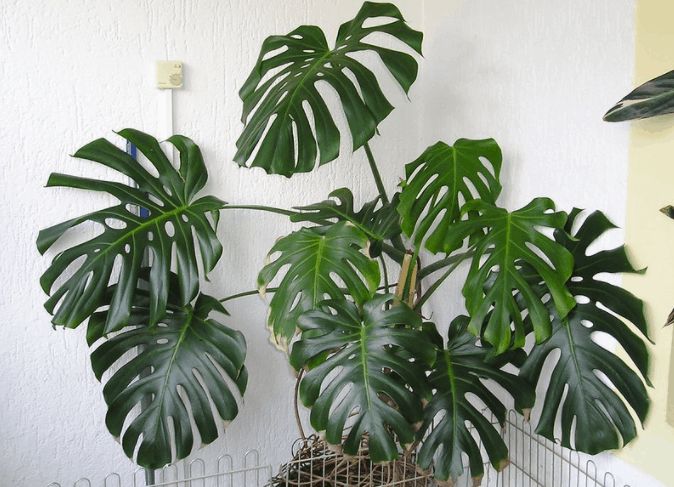
This plant is also known as delicious monsters and the Swiss cheese plant, among other names. The Monstera deliciosa has aerial roots. This plant is an epiphyte, which means that it relies on another plant for support, but can get its nutrients on its own instead of being a parasite to the supporting plant.
A Monstera deliciosa can grow very tall, climbing more than 30 feet (nine meters). There are Monstera deliciosa plants in the wild that can grow up to 66 feet (20 meters).
Leaves
A Monstera deliciosa can have huge heart-shaped leaves that can be leathery to the touch. The glossy leaves can range from 10 to more than 35 inches (25 to 90 centimeters) in length. Plus, it can be anywhere from 10 to 29.5 inches (25 to 75 centimeters) wide.
But that’s in the wild. If you’re worrying that the leaves will take over your living room, you can rest easy. Indoors, the leaves will only grow around three feet (one meter) long. Younger leaves might be whole with no holes or fenestrations. These leaves will develop the fenestrations as they grow more mature.
Flowers
The inflorescence of a Monstera deliciosa features a cream-white enclosure called a spathe. This spathe has small yellowish-white flowers. These flowers can pollinate themselves, and the whole inflorescence can measure around 3.9 to 5.9 inches (10 to 15 centimeters) tall, with diameters of 1.2 inches (three centimeters).
Fruits
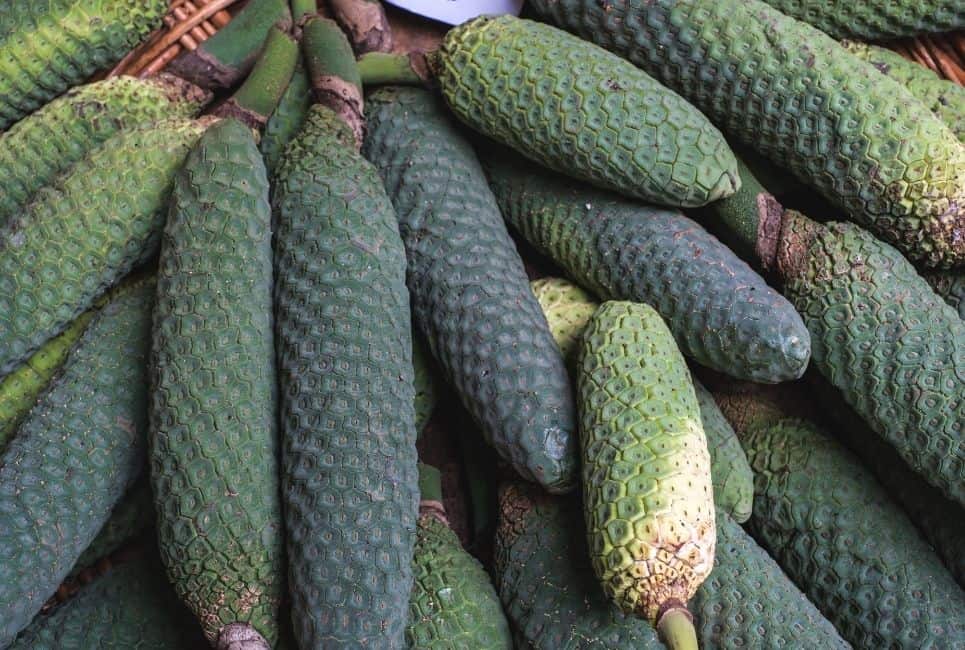
The Monstera deliciosa takes its name from the edible fruits that it produces. It’s known for its sweet scent that can remind of bananas or pineapples. Those who have tasted it sometimes describe the flavor as a mix of these two fruits, plus a hint of coconut, mango, and strawberry.
This mix of flavors is also why some people call the Monstera deliciosa the fruit salad plant. The fruits look like an ear of corn, but you have hexagonal scales instead of the fiber covering. These fruits can measure up to 10 inches (25 centimeters) long with diameters of 1.2 to 2.0 inches (three to five centimeters).
Where Does Monstera Deliciosa Grow
Monstera deliciosa is native to the southern part of Mexico, Costa Rica, El Salvador, Belize, Honduras, Guatemala, and right through Panama. These plants are mostly found in tropical forests in these countries. However, these plants can grow even in temperate climates as houseplants. They are known to be a mildly invasive species in some areas, such as in Seychelles, the Society, Hawaii, and Ascension Island.
The Monstera deliciosa may be grown outdoors in the United States Department of Agriculture zones 10 and 11.
Uses of Monstera Deliciosa
The big and beautiful leaves on your Monstera deliciosa make it an attractive houseplant. You can also add it to your garden and have them climb trees around your yard. Mexicans and Peruvians use the roots of this plant to make ropes. They are also used for basket weaving.
Then you can also eat the fruit and have a good snack that’s rich in vitamin C, potassium, natural sugars, and fiber. There are also health claims that people swear by.
Some people say that the fruits of this plant are a great cure for arthritis, snake bites, coughs, infections, fever, bruises, and wound cleaning. Some studies say that eating these fruits can have promising effects for people who are living with diabetes.
However, none of these traditional health claims have been proven. Given that the sap and unripe food can irritate your mouth and skin, it’s best to check with your doctor before giving these remedies a whirl.
How to Grow Monstera Deliciosa from Seed
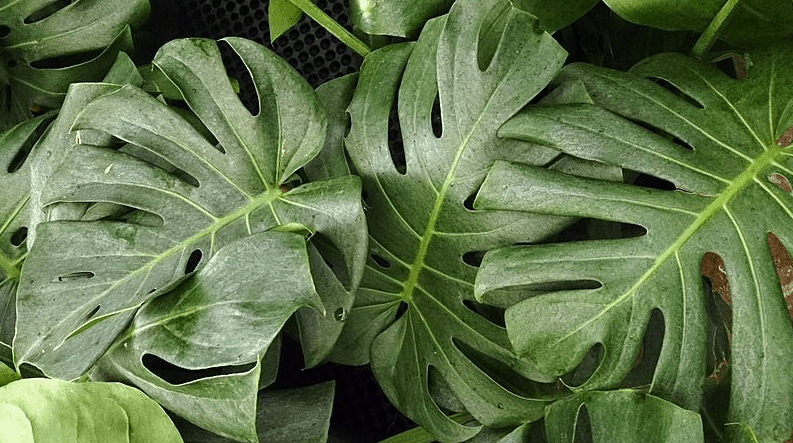
The easiest way to propagate a Monstera deliciosa is to get cuttings from live plants and then rooting them. But you can certainly grow it from seed. Here’s how.
Monstera Deliciosa Growing Conditions
Your Monstera deliciosa will thank you if you put it in a growing medium that can hold moisture in but is also well-draining. This type of soil will help your plant to anchor itself properly.
It also facilitates the exchange of gas and can give your Monstera the right amount of moisture. Plus, they get the nutrients that they need to thrive.
Some of the ready-mixed products you can buy include:
- Jessi Mae Air Cleaning Plant Soil
- Houseplant and Tropical Classic Potting Mix
- Miracle-Gro Indoor Potting Mix
- Houseplant Resource Center Premium Monstera Potting Soil
Or you can make your own. This Kaylee Ellen video will show you just how to create your own soil mix that’s just perfect for your Monstera deliciosa.
Choosing a Pot
A Monstera deliciosa likes moist soil, and it can grow fast if the conditions are right. Larger pots can mean that your plant might be sitting in too much water because it will have a lot of soil to work with. But choosing a small pot can limit its growth. Choosing a pot that’s just right will help balance the disadvantages that come with selecting the extremes.
Giving your Monstera deliciosa plenty of room to grow not only helps to keep it healthy but also allows you to wait longer before you have to report it.
Also, choose a heavy pot for your Monstera deliciosa. If you use plastic pots, it might not provide your growing plants the much-needed heft and support. Your Monstera and the pot, along with the soil or potting mix in it, will keep on toppling over.
Further, it will make caring for your Monstera deliciosa a whole lot easier if you use a pot with drainage holes.
Some pots we can recommend are:
- DR.Planzen Ceramic Planter Pot with Saucer and Drainage Holes
- Indgo Planter with Stand
- OMYSA Large Indoor Planter
- Pinecone Living Plant Pot Stand and Modern Ceramic Flower Pot
- PSW Arcadia Garden Products FB40CT Simplicity Square
When to Plant Monstera Deliciosa
While you can plant Monstera deliciosa seeds any time, the general rule is that the seeds will germinate faster when it’s warmer out. Because of this, you might want to avoid planting the seeds in winter. Monstera deliciosa is also not winter-hardy. If you’re planting in the fall months, the seedlings might die when the winter cold sets in. To be safe, plant your seeds in the spring or early summer.
How to Plant Monstera Deliciosa
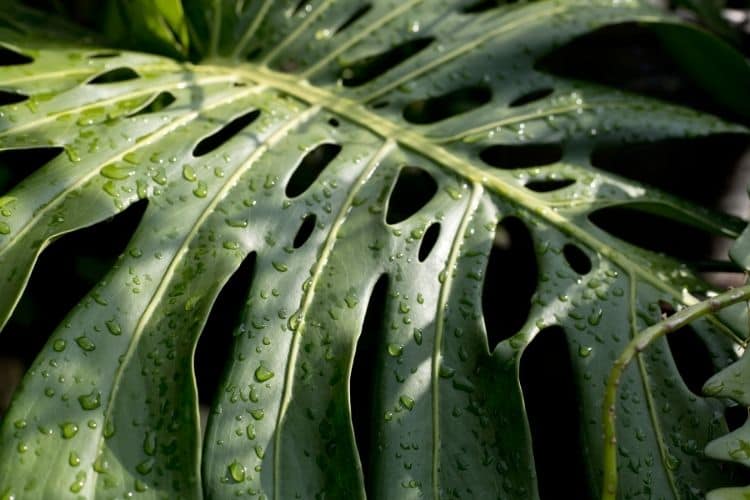
Monstera deliciosa seeds can become unviable after only a short while. These seeds should be planted while they are fresh or when they’re still green, yellow, or light brown. Waiting too long to plant these seeds will probably cause a very low germination rate. If you can’t plant the seeds soon, you can keep them covered in sphagnum moss and then place them inside your refrigerator.
Presoaking the seeds is an excellent way to prepare them for planting. If you have fresh seeds, you can do away with this step. But if you have slightly dried up seeds, you will need to rehydrate them. Presoaking the seeds with warm water and leaving them there for around 24 to 48 hours will also help break down the coating that covers these seeds.
Peat-Based Potting Mix
You can put these seeds in a paper towel and keep them in a Ziploc bag. Or you can just go ahead and plant them directly into your potting mix.
We recommend using a peat-based potting mix to give your seeds the best conditions to germinate.
Monstera Deliciosa Water Requirements
Watering your Monstera deliciosa is a balancing act. If you don’t water it enough, it may die. If you water it too much, it gets root rot, and then it dies. So how do you ensure that your plant is getting the water it needs? Stick your finger around two inches (5.1 centimeters) into the soil or potting mix.
If the soil is dry, you should irrigate your Monstera. Fill the pot around two to three times, allowing the water to drain out in between fillings. In the winter months, you can get away with less watering. Instead of checking two inches (5.1 centimeters) into the soil, you only water when the top three to four inches (7.6 to 10.2 centimeters) is dry.
Now you know how to water your Monstera deliciosa properly, you should also know how much humidity it can take. This plant likes high humidity, but it can be forgiving when the air is drier than it prefers. However, if you have low humidity around the house, you should mist your Monstera deliciosa twice a week. The ideal time is during early mornings so that the water can dry off.
Monstera Deliciosa Sun Requirements
Monstera deliciosa tends to prefer growing in an area where it can get bright but indirect sunlight. In the wild, these vines are often found climbing trees, and younger plants seek darker areas until they find a tree that they can climb.
Too much sunlight and the easily burned leaves will be scorched. You should look for an area outside your home that gets partial or full shade, and your Monstera deliciosa should be fine. If you should keep your plant in full or partial shade, you should also protect it from freezing temperatures. So if you reside in a place where you get cold winters, you should grow your Monstera deliciosa indoors.
Ideal temperatures for a thriving and healthy Monstera deliciosa ranges from 68 to 86 degrees Fahrenheit (20 to 30 degrees Celsius).
Best Monstera Deliciosa Fertilizer
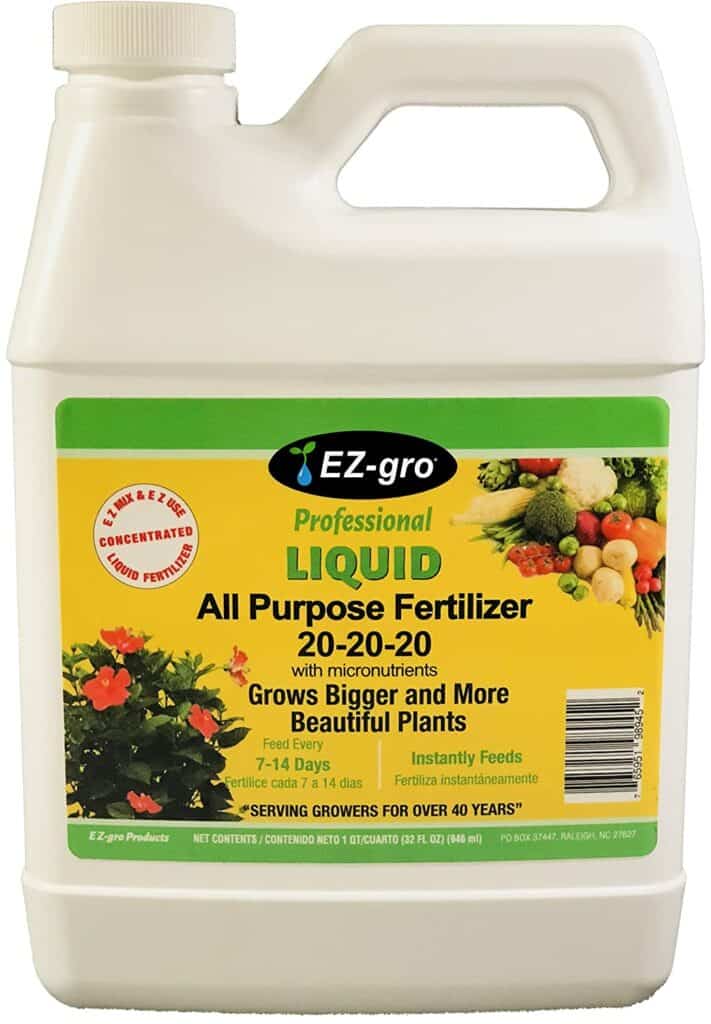
Use a product like EZ-gro Professional Liquid All-Purpose Fertilizer, which has a balanced NPK and micronutrients. Dilute about half a teaspoon of this liquid fertilizer in a gallon of water and then pour it into your soil.
Apart from using liquid fertilizer, you might want to ensure continuous feeding with a slow-release product such as Exotica Tropicals Monstera Fertilizer. Your Monstera deliciosa gets five to six months of feeding with just a small amount of the granules.
Further, if your Monstera deliciosa grows in sandy soil, you will want to give it a soil drench every year. If you haven’t heard of soil drenching before, it’s when you add diluted nutrients into the soil near the base of your plants. It’s also how pest control professionals apply insecticides to trees and other plants.
Monstera deliciosa growing in sandy soil will need iron to grow healthy. So once a year, mix a product like LawnStar Chelated Liquid Iron with water and pour it near the base of your plant.
Best Monstera Deliciosa Companion Plantings
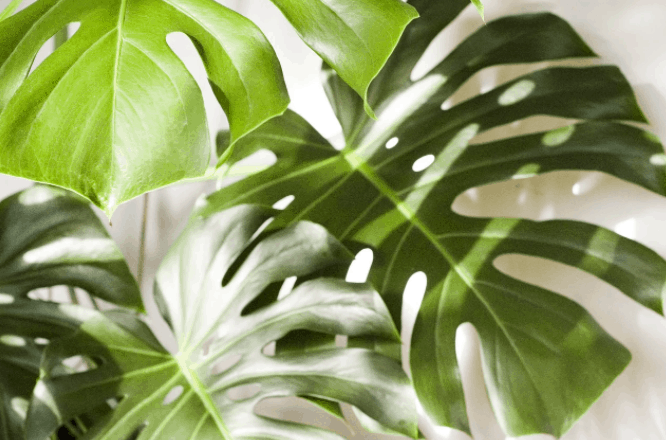
The sad news is that the Monstera deliciosa doesn’t play well with others. According to the risk assessment done by the University of Hawaii at Manoa, this plant is not allelopathic. Allelopathy is the process where two different kinds of plants use biochemicals to communicate with each other.
Monstera deliciosa brings a lot of drama with its diva attitude, not wanting to share pots with other plants. Your Monstera deliciosa can suppress the growth of other plants growing near it. It may even kill their neighbors. If you absolutely have to, you can grow plants with the same care requirements in the same pot as your Monstera deliciosa. Try peace lilies, snake plants, spider plants, and Chinese evergreens.
Monstera Deliciosa Diseases and Common Problems
Fortunately, your Monstera deliciosa isn’t prone to get attacked by insects and pests. But there are instances wherein you will have to deal with mealybugs, spider mites, scale, aphids, and some diseases.
If you’re an indoor plant lover, you should always be ready to fight mealybugs. These little insects have their bodies covered with white wax. They love to suck the sap of your Monstera deliciosa, and that can lead to yellowing leaves and can affect the plant’s healthy growth.
Spider mites are smaller, but they can be detected because of the webbing that they create to go from one part of your Monstera deliciosa to another. They suck the chlorophyll out of the plant’s leaves, causing it to have white spots.
On the other hand, scale insects can stunt the growth of your Monstera deliciosa. It can also cause the leaves to yellow. They also leave honeydew that can lead to sooty mold. Further, you need to deal with aphids, which also sucks the sap of your Monstera. Lastly, avoid overwatering your Monstera deliciosa to prevent root rot.
Monstera Deliciosa Treatments and Maintenance
You should clean the leaves of your Monstera deliciosa. Using dish soap that’s diluted very weakly in water, you can clean the leaves by wiping them down with a clean cloth. Cleaning the leaves will make the foliage look better, and it will also keep the dust away. Doing this monthly, you don’t have to worry about unsightly dust or dirt collecting on your Monstera deliciosa.
What’s more, it’s not only for aesthetics. A monthly cleaning can also prevent the pests from converging on your plant.
Dealing with Insects and Pests
You will need to use neem oil to help prevent insects from feasting on your Monstera deliciosa. When you have an infestation of mealybugs, you can use insecticidal soap or just remove them by hand.
You can do the same for spider mites. However, for scale insects, you can use a Q-tip and alcohol to remove them and keep them away. Meanwhile, rapids can be washed off your plant. They can also be killed with insecticidal soap or insecticide. If you can, introduce parasitic wasps or lady beetles into your garden to help ward off these pesky insects!
Support and Pruning
Because it’s in their DNA, your Monstera deliciosa will want to climb. Left outside, they will find the nearest tree to latch onto. If you’re growing them inside, you will want to give them a moss pole such as this Grow Organics 12 inch 2PK Coco Coir Pole.
There is no need to prune your Monstera deliciosa, but you can cut them back for aesthetic reasons if the stems are getting unruly. You can also cut away dead leaves near the base of the plant. If you want, you can also safely cut the aerial roots. Or you can stick them into the soil if they are close to the ground. Never cut the main stalk.
Monstera Deliciosa Repotting Instructions
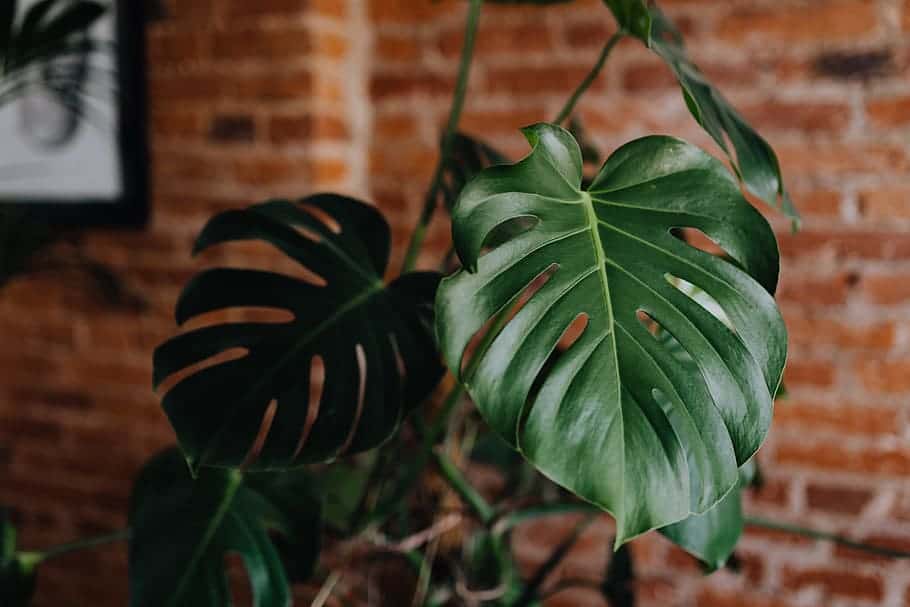
The good news is that even as Monstera deliciosa does grow rather quickly, it may take a couple of years before you need to repot them. One way to know if you find yourself watering your Monstera more often than you used to.
More frequent watering means that the roots are taking up more space than soil. There isn’t enough soil to hold the water and keep the right amount of moisture for your plant. Or it could be that the roots are showing above the soil. Or breaking through the drainage holes of the pot. All of these mean that the roots need space to breathe, and it’s time for a bigger pot.
It’s recommended to choose a pot that is one size bigger. But if you have a Monstera deliciosa that is overly root bound, then you might want to save yourself the trouble more frequent repotting and get a pot that’s two sizes bigger.
Repotting your Monstera deliciosa should be done when spring or early summer comes. Because your plants are actively growing, they would benefit more from the fresh nutrients in the new soil that you just provided.
How to Repot Your Monstera Deliciosa
Once you have your pot, potting mix, and plant ready, take out the Monstera deliciosa from its old pot. Be careful not to overly damage the roots in doing so. Gently tease out the individual roots from the root ball, as they tend to be very compact. Remove the old soil that is attached to the roots.
With a small layer of potting mix already in the new pot, put your Monstera deliciosa into the bigger container and fill it with more potting mix. Water your newly repotted Monstera thoroughly. If the plant is too big for you to handle alone, you should ask a friend to help you out.
Where to Buy Monstera Deliciosa Seeds Online
If you already have a Monstera deliciosa and it has borne fruit, you can just harvest the seeds inside the hexagonal berries that surround the fruit. But you can always buy these seeds online.
But remember, Monstera seeds, in general, do not store well for long. Plant the seeds right after they are harvested. Shriveled or dried-up seeds will not germinate.
Etsy is an excellent starting point to get fresh Monstera deliciosa seeds. You can find sellers like Growing Hope Shop or Bee Botany. Plantflix also has some choice seeds that came from a grower in San Marcos. Other online retailers you can rely on are Tropical Seeds and Rare Exotic Seeds.
Where to Buy Monstera Deliciosa Plants Online
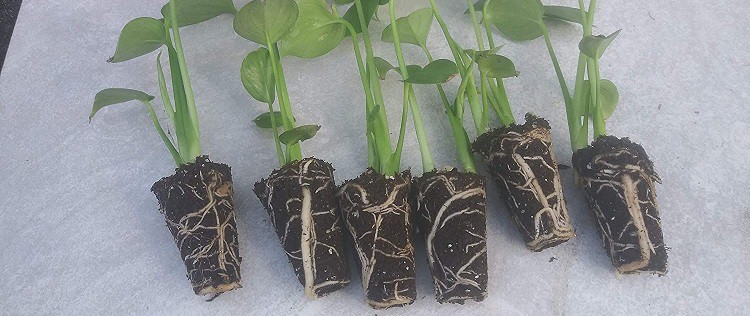
More than just seeds, you can find sellers on Etsy that sell live Monstera deliciosa plants. Some even come with plastic grow pots.
You can also go through the listings on Amazon for sellers like this one. Meanwhile, big-box retailers such as Walmart are also great places to shop for live Monstera deliciosa plants.
FAQs
Question: Are You Sure the Fruits are Edible?
Answer: Yes. But you have to be sure that these fruits are ripe. Unripe fruits will have calcium oxalate in them, and that can cause mouth irritation.
How do you know that the fruits are ready to eat? For one, it takes more than a year for these fruits to mature. When it’s starting to ripen, the lowest scales will yellow, and soon after, these will fall off the fruits.
A half-ripe fruit will be marked by the strong odor that it produces. But when the fruit is fully ripe, the smell will not be as strong.
Question: Can I grow a Variegated Monstera Deliciosa From Seed?
Answer: Variegated monsteras are probably some of the most popular houseplants today. You can often find these plants being sold for ridiculous amounts of money. So a lot of people are trying to grow these plants from seed rather than paying $100 or more for a variegated live Monstera deliciosa.
So, do you want the good news or the “not what you want to hear” news? The good news is that you will be able to grow a variegated Monstera deliciosa from seed.
The not-so-good news is that you’d have to be very lucky to get a variegated variety of Monstera deliciosa. Variegation is a recessive trait, which means that even if you do have seeds from a variegated plant, it’s not a guarantee that the resulting plant will also be variegated.
As such, the chances of growing a variegated Monstera deliciosa from seed is very, very, very, low. And we’re not exaggerating.
So why do you see all those variegated delicious monsters all over your Instagram feed or Pinterest boards? They are probably propagated from a variegated mother plant. So if you have a friend who has a variegated Monstera deliciosa, ask for a cutting!
Question: What Causes the Variegation in Some Monstera Deliciosa Plants?
Answer: Personally, I don’t think that variegated Monsteras are beautiful. Variegation is caused by a genetic mutation in the plant cells that prevents them from storing chlorophyll.
Chlorophyll is that pigment that gives leaves their green color. It’s also important in making the plant’s food. So, that puts a variegated plant at a disadvantage.
Other people would also use chemicals to force the mutation to happen. These can kill your plant.
Grow These Delicious Monsters at Home
One look at a Monstera deliciosa, and it wouldn’t be hard to convince anybody to give them a spot in their houseplants collection. These climbing vines are beautiful, and they are very easy to care for. Just give them the right conditions and they will keep to themselves and thrive.

